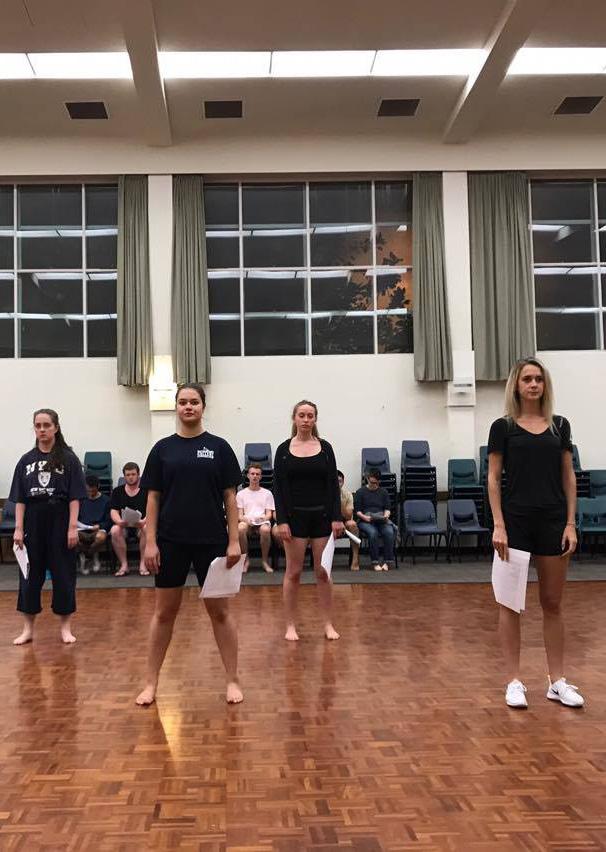
2 minute read
How We Made BOYS — PROCESS
—
First Workshop
Prior to rehearsals beginning, the cast assembled for a three-day workshop. The goal of this workshop was to introduce the cast to the ideas and process of the project, build the ensemble, and read the Foreskin’s Lament text.
At this first reading, no characters were allocated, each actor took a line followed by the next actor in the circle taking the next line. This exercise allowed for a group to understand the play without focussing on a particular actor’s interpretation.

The cast broke into smaller groups and were each given several news articles relating to a particular case (Veitch, The Chiefs, John Key, etc). They were asked to read the articles and discuss, presenting a summary of the key facts back to the broader group. The directors then led a discussion of the cast’s personal response to the articles. What did they think about the facts of each case? Did they consider it inappropriate? Why or why not? Did it relate to anything in their own lives?
Finally, the groups were introduced to and explored ‘neutrality’ as a performance form. We asked the ensemble to read the Foreskin’s Lament text or quotes from the newspaper articles with as little ‘affect’ as possible. We asked them - how could you make the performance as plain as possible so the audience can hear the words afresh and make up their own mind?
In groups they put together ‘mashups’ - combining text from Foreskin’s Lament and the articles to make a piece with new meaning. They also played and practiced rugby for fun.
SCRIPTING, DEVISING & CASTING
The rehearsal process was eight weeks long and the cast met for three rehearsals a week - two evenings and one weekend day. In the first half of the process the cast split off into two groups. The boys rehearsed the first act of Foreskin’s Lament following a traditional process of creating character biographies, undertaking text work to figure out beats and objectives, and staging the scene. Working from a pre-prepared and edited script of the media transcripts for the panel, the women worked on neutrality, and staging conventions for the panel. Certain phrases were decided to be repeated. They devised a dance that evolved in collaboration with Te Aihe Butler, the sound designer.
The group worked together on the third act of BOYS. The writer, Eleanor, prepared edits of the Foreskin’s Lament material, and the directors worked with the cast to stage each scene – attempting to create a dislocated, unfamiliar tone to realism, they split up lines and staged the cast looking out to the audience.

Eleanor conducted interviews with the cast and made notes from the discussions of themes and ideas they had. From here, Eleanor pulled out lines that each cast member could say from their perspective as the ‘modern’ interjections into the text. The writing process was collaborative. Eleanor asked cast members to bring their own line contributions into a specific scene or put an ‘idea’ into their own voice or language.
Rehearsal
A few weeks before the performance, the script was locked by Eleanor, and the cast focused solely on rehearsing the script as written.











